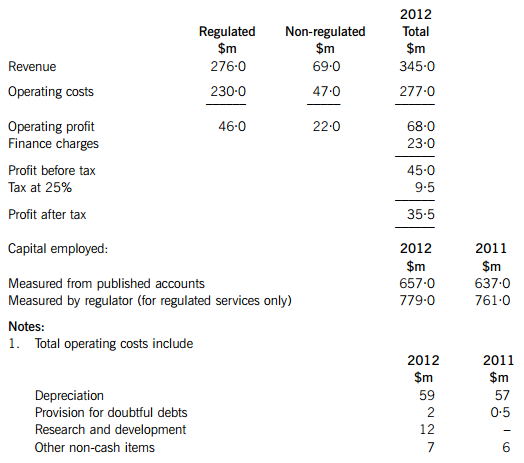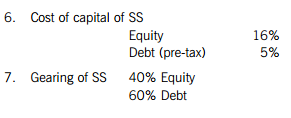 题目内容
(请给出正确答案)
题目内容
(请给出正确答案)
Economic utility includes ()
B.Form utility
C.Place utility
D.Time utility
 如搜索结果不匹配,请 联系老师 获取答案
如搜索结果不匹配,请 联系老师 获取答案
 题目内容
(请给出正确答案)
题目内容
(请给出正确答案)
B.Form utility
C.Place utility
D.Time utility
 如搜索结果不匹配,请 联系老师 获取答案
如搜索结果不匹配,请 联系老师 获取答案
 更多“Economic utility includes ()”相关的问题
更多“Economic utility includes ()”相关的问题
第1题
A.Time
B.Production
C.Place
D.Possession
E.All of the above are types of economic utility
第2题
A.utility
B.economic profit
C.wages
D.normal profit
第4题
A.The utility of a service
B.The warranty of a service
C.The economic value of a service
D.Return on investment
第5题
A、At conceptual level, a firm earns revenue as it engages in activities that increase the value (or utility, in economic terms) of an item or service.
B、Revenue as it engages in activities that increase the value (or utility, in economic terms) of an item or service.
C、At level, a firm earns revenue as it engages in activities that increase the value (or utility, in economic terms) of an item or service.
D、None of the above.
第6题
A.economic
B.economist
C.economically
D.economy
第7题
A.economic
B.economist
C.economically
D.economy
第8题
A、Austrian.
B、New Classical.
C、New Keynesian.
第9题
Section B – TWO questions ONLY to be attempted
Stillwater Services (SS) is a listed water utility company providing water and sewage services to the public and businesses of a region of Teeland. The company was formed when the government-owned Public Water Company of Teeland was broken up into regional utility companies (one of which was SS) and sold into private ownership over four years ago.
As a vital utility for the economy of Teeland, water services are a government-regulated industry. The regulator is principally concerned that SS does not abuse its monopoly position in the regional market to unjustifiably increase prices. The majority of services (80%) are controlled by the regulator who sets an acceptable return on capital employed (ROCE) level and ensures that the pricing of SS within these areas does not breach this level. The remaining services, such as a bottled water operation and a contract repairs service, are unregulated and SS can charge a market rate for these. The regulator calculates its ROCE figure based on its own valuation of the capital assets being used in regulated services and the operating profit from those regulated services.
The target pre-tax ROCE set by the regulator is 6%. If SS were to breach this figure, then the regulator could fine the company. In the past, other such companies have seen fines amounting to millions of dollars.
The board of SS are trying to drive the performance for the benefit of the shareholders. This is a new experience for many at SS, having been in the public sector until four years ago. In order to try to better communicate the objective of maximising shareholder wealth, the board have decided to introduce economic value added (EVA?) as the key performance indicator.
The finance director has asked you to calculate EVA? for the company, based on the following financial information for the year ending 30 September 2012:
Stillwater Services

2. Economic depreciation is assessed to be $83m in 2012.
Economic depreciation includes any appropriate amortisation adjustments.
In previous years, it can be assumed that economic and accounting depreciation were the same.
3. Tax is the cash paid in the current year ($9m) and an adjustment of $0·5m for deferred tax provisions. There was no deferred tax balance prior to 2012.
4. The provision for doubtful debts was $4·5m on the 2012 statement of financial position.
5. Research and development is not capitalised in the accounts.
It relates to a new project that will be developed over five years and is expected to be of long-term benefit to the company. 2012 is the first year of this project.

Required:
(a) Evaluate the performance of SS using EVA?. (13 marks)
(b) Assess whether SS meets its regulatory ROCE target and comment on the impact of such a constraint on performance management at SS. (7 marks)
第10题
Generally speaking, everybody prefers present pleasures or satisfactions of given magnitude to future pleasures or satisfactions of equal magnitude, even when the latter are perfectly certain to occur. But this preference for present pleasures does not——the idea is serf-contradictory——imply that a present pleasure of given magnitude is any greater than a future pleasure of the same magnitude. It implies only that our telescopic faculty is defective, and that we, therefore, see future pleasures, as it were, on a diminished scale. That this is the right explanation is proved by the fact that exactly the same diminution is experienced when, apart from our tendency to forget ungratifying incidents, we contemplate the past.
Our analysis also suggests that economic welfare could be increased by some rightly chosen degree of differentiation in favor of saving. Nobody, of course, holds that the State should force its citizens to act as though so much objective wealth now and in the future were of exactly equal importance. In view of the uncertainty of productive developments, to say nothing of the mortality of nations and eventually of the human race itself, this would not, even in the extremest theory, be sound policy. But there is wide agreement that the State should protect the interests of the future in some degree against the effects of our irrational discounting and of our preference for ourselves over our descendants. The whole movement for "conservation" in the United States is based on this conviction.
It is the clear duty of Government, which is the trustee for unborn generations as well as for its pre sent citizens, to watch over, and, if need be, by legislative enactment, to defend, the exhaustible natural resources of the country from rash and reckless spoliation.
Plainly, ff we assume adequate competence on the part of governments, there is a valid case for some artificial encouragement to investment, particularly to investments the return from which will only begin to appear after the lapse of many years. It must, however, be remembered that, so long as people are left free to decide for themselves how much work they will do, interference, by fiscal or any other means, with the way they employ the resources that their work yields to them may react to diminish the aggregate amount of this work and so of those resources.
What does, according to the author, economic welfare consist of?
A.a general sense of contentment with any individual being part of a group.
B.a basic duality or dichotomy between the amount of pleasures that one individual can experience and discontentment.
C.the act of measuring the amount of gratifications and dissatisfactions with a measure of value.
D.the relentless idea that people have to forfeit in expiation for their pleasures.


为了保护您的账号安全,请在“上学吧”公众号进行验证,点击“官网服务”-“账号验证”后输入验证码“”完成验证,验证成功后方可继续查看答案!

 微信搜一搜
微信搜一搜
 上学吧
上学吧



 微信搜一搜
微信搜一搜
 上学吧
上学吧